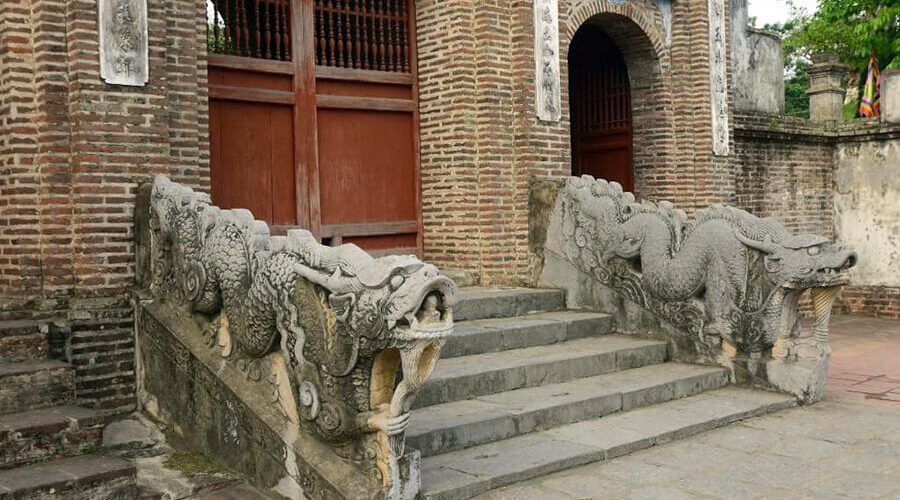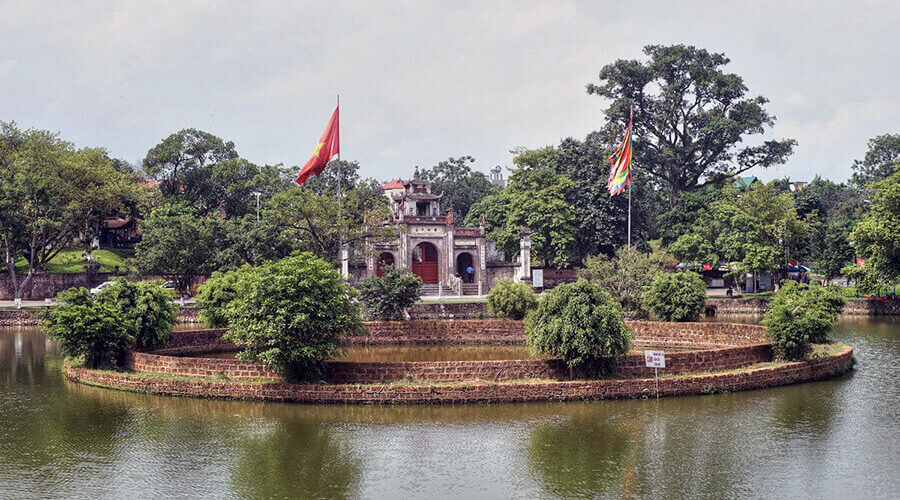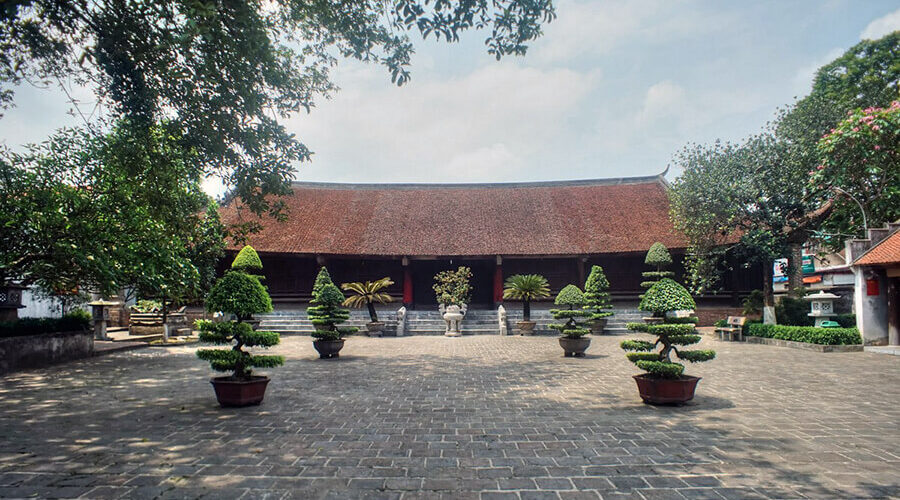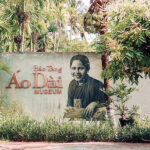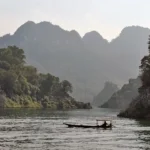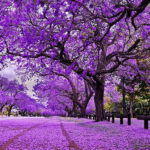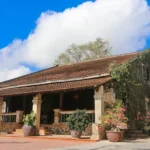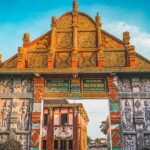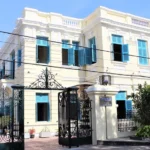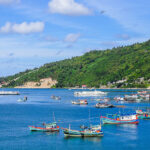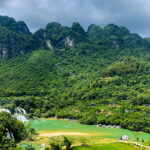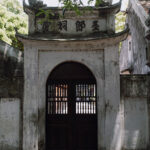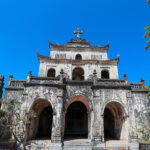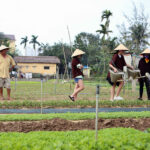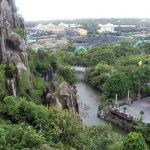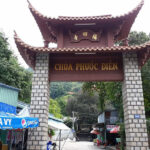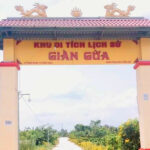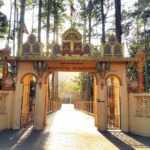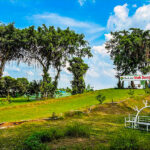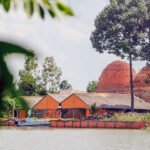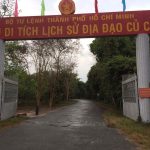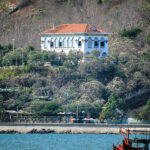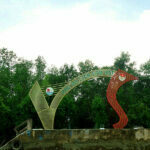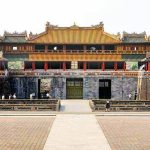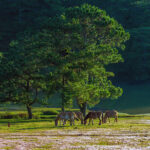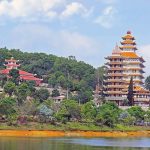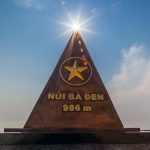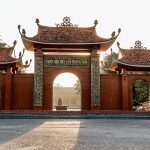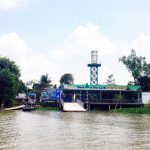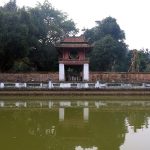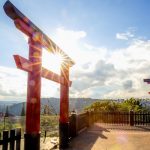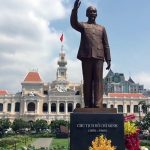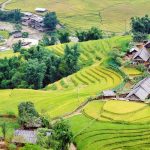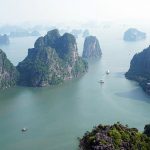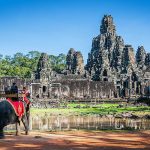Co Loa Citadel is not only a cultural heritage, a proof of the creativity, technical level and culture of the ancient Vietnamese people. Currently, this place has long become a tourist destination imbued with historical values associated with many legends of Vietname.
General information about Co Loa citadel
Table of Contents
Co Loa Citadel (Vietnamese: Thành Cổ Loa, literally meaning “ancient spiral”), also known as Loa Citadel, is an ancient citadel associated with the legend of An Duong Vuong building the citadel and the story of My Chau – Trong Thuy. This citadel was built in the 3rd century BC, was the capital of Au Lac country, now belongs to Dong Anh district, Hanoi capital.

Archaeologists have identified this as the oldest, largest citadel and also the place with the most unique structure in the history of citadel construction of the Ancient Vietnamese people. Co Loa Citadel is associated with the legend of “The Magic Crossbow” when King An Duong Vuong built the citadel (III century BC).
In the relic area, there are currently about 60 ancient relics, of which 7 are ranked at the National level. Besides, the area is also preserving a system of intangible cultural heritage including unique folk customs, festivals, traditional craft villages and typical culinary culture.
Address: Co Loa commune, Dong Anh district, Hanoi capital
Opening hours: 6:30 – 18:00 daily
Reference price: 10,000 VND/person
Architecture of Co Loa Citadel
The architecture of Co Loa citadel has an extremely characteristic “spiral shape”, the name Loa Citadel also comes from the shape of the citadel. According to records, the citadel has a total of 9 spiral circles, shaped like a snail, reflecting of the citadel’s multi-layered structure with concentric ramparts and moats. Today, there are only 3 remain. The citadel structure is divided into 3 areas: inner, middle and outer rampart, with many unique architectural works.

The outer rampart was a naturally closed polygon made by excavating and connecting a system of pre-existing mounds, piles, and high promontories. This rampart has a circumference of about 8,000m long, about 3-4m high, about 6m wide on the surface, and about 12-20m wide at the base.
The middle rampart was also a natural closed polygon and was made similarly to the outer. This rampart has a circumference of about 6,500m long and about 5m high.

The inner rampart is the innermost citadel, has a rectangular shape with a circumference of about 1,850m, about 5m high, about 6-12m wide on the surface, and 20-30m wide at the base. It was the residence of the King, mandarins and their family members. Today, the inner citadel is used as a place to worship An Duong Vuong and Princess My Chau. Many architectural works belonging to relics are also gathered in this citadel.

In addition, along with the earthen ramparts, there are also defensive emplacements. Outside of the city rings, there were moats connecting each other to the Hoang Giang River, convenient for movement and trade between areas within the rampart as well as further to the Red River. The results of digging and cutting the trench in the middle rampart area show that the trench is 6.5m from the rampart, the trench surface is 10m wide, the trench bottom is 1.0m wide and 4.5m deep.
Outstanding tourist spots in Co Loa citadel
As one of the ancient citadels with the most unique scale and architecture in Vietnam, Co Loa relic site has many attractive attractions waiting for you to explore.
An Duong Vuong temple
An Duong Vuong Temple, also known as Thuong Temple, is located on the mound, where legend said that there was a palace of King Thuc Phan (reign 257–179 BC), surrounding by two forests, and two round holes at bellow. Right in front of Thuong Temple is a large lake, inside there is Jade well – The place where Trong Thuy committed suicide in the legendary story.

The temple still retains a number of relics such as a bronze statue of An Duong Vuong, horses statues, items made of bronze, porcelain, wood, fabric… In front of the gate are two stone dragons with curving bodies. The beard is carved extremely delicately, bearing the architectural style of the Le Dynasty.
My Chau Shrine
Located right behind a thousand-year-old banyan tree shading a large yard, the banyan tree splits into an archway opening the way to My Chau Shrine, also know as My Chau Temple or Ba Chua Temple. The shrine area is an architecture consisting of 2 main parts. The forecourt is a house built of wood with 3 compartments and the roof is covered.

Inside, there are many parallel sentences and tureens on explain about My Chau’s life. The sanctuary is where the altar to worship My Chau placed. There is a statue called My Chau statue here – a natural rock shaped like a headless person, so the villagers call it My Chau’s tomb.
Cao Lo Temple
Cao Lo Temple is also a place that many people visit when visiting Co Loa citadel. Cao Lo was a talented general under King Thuc Phan, the creator of the Lien Chau crossbow that could shoot many arrows at the same time and helped the king build the citadel.

To commemorate his gratitude, people cast statues and built temples. Cao Lo Temple is small in scale, in the middle of the pond in front of the temple is a statue of Cao Lo holding a crossbow. In the temple, there are still many bronze arrows unearthed by archaeologists.
Jade Well
Jade Well is located in the middle of Crescent Lake (Ban Nguyet Lake) and right at the door of King An Duong Vuong’s temple. According to ancient legend, this is the place where Trong Thuy once threw himself down because of his regret and grief for My Chau.

The water in Jade well, if viewed from a distance, will be slightly red in color, standing out among the clear blue lake water and cool trees.
Co Loa Communal House
Co Loa Communal House also called Ngu Trieu Di Quy is located on the foundation of the old imperial palace, which was moved from another place and rebuilt at the end of the 18th century. The communal house has the most solid and majestic architecture in Co Loa citadel.

Currently, the communal house is also the place to worship An Duong Vuong wearing the royal robe, below is worshiping General Cao Lo, the person who invented the “Magic Crossbow”.
Area displaying archaeological artifacts in Co Loa
The gallery is a place to exhibit ancient artifacts excavated within the Co Loa relic grounds. Here, visitors will be able to see firsthand the map of Co Loa Citadel with 9 rampart rings, and many precious artifacts dating back thousands of years such as: Co Loa bronze arrows, Co Loa crossbow bolts, Lien Chau magic crossbows, Co Loa bronze drums, spear blades, bronze axes, bronze plowshare collection, mold collection Co Loa casting.

Enjoy specialties at Co Loa
When coming to Co Loa citadel, you should not miss the opportunity to enjoy Mach Trang rice vermicelli – a familiar folk dish of Co Loa people. Compared to the rice vermicelli of many other countryside, Mach Trang rice vermicelli are not as white and eye-catching as the others but are typically ivory.

Mach Trang vermicelli products can not only be eaten directly with many other foods to create dishes such as fish sauce vermicelli, kebabs, tofu… but can also be used to stir-fry with celery. Stir-fried vermicelli with celery has long become a traditional dish of Co Loa.
Explore the Co Loa festival
Co Loa Festival is solemnly held every year, from January 5th and 6th January (Lunar Calendar) to honor and commemorate the merits of King An Duong Vuong who founded the state of Au Lac and built the capital Co Loa. The festival atmosphere is solemn and respectful with many traditional rituals such as: offerings to the king, offerings to An Duong Vuong temple, palanquin procession around the semicircular lake through Co Loa communal house and My Chau shrine.

In addition, the festival also takes place many exciting activities with the participation and response of a large number of people and tourists such as: classical Vietnamese opera performances, water puppetry…and other traditional games: crossbow shooting, human chess, wrestling, cockfighting and clay pot smashing…
Source: collected by An
Follow us for the best deal with Vietnam package tours and visa services!
